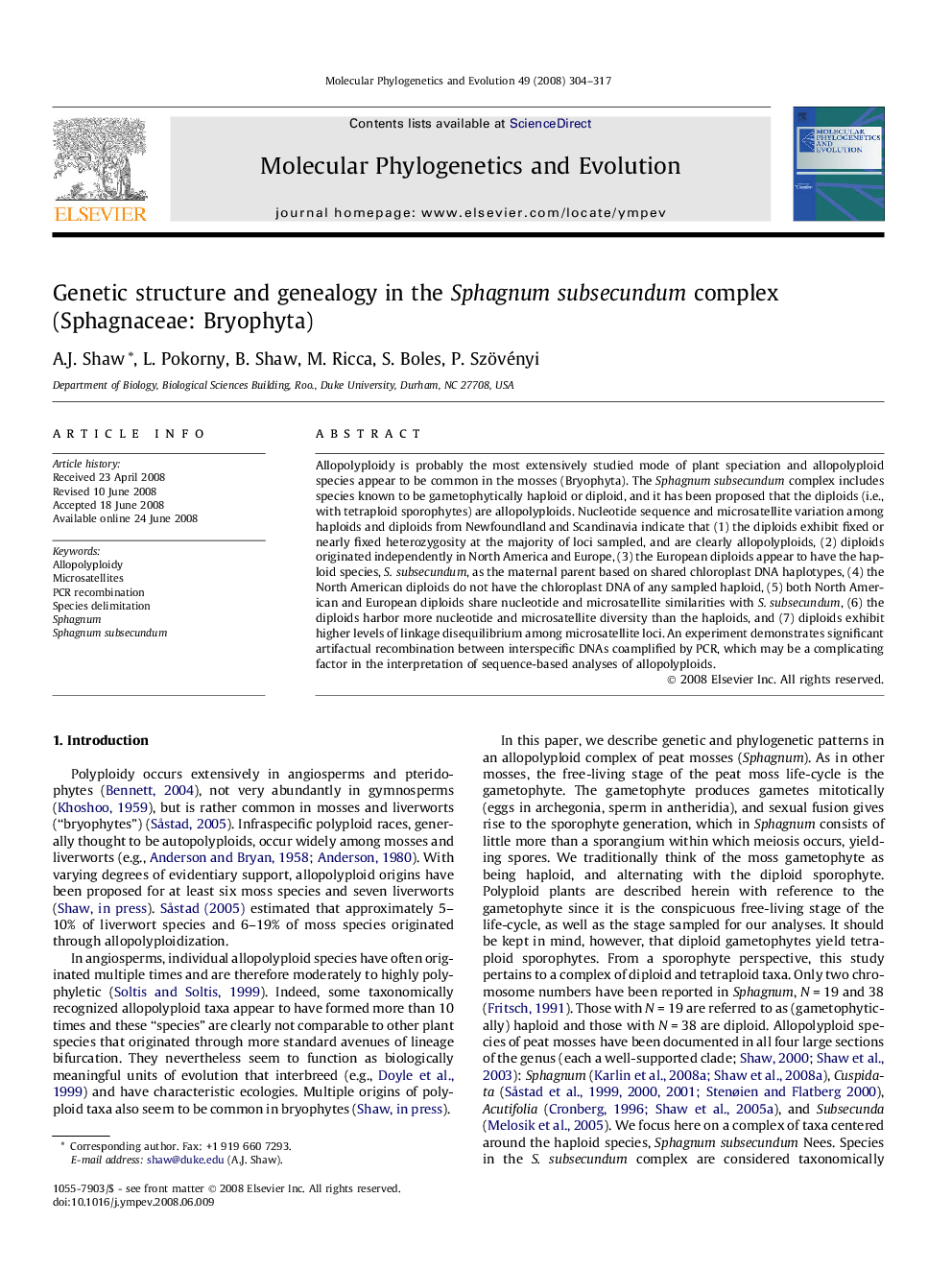| Article ID | Journal | Published Year | Pages | File Type |
|---|---|---|---|---|
| 2835049 | Molecular Phylogenetics and Evolution | 2008 | 14 Pages |
Allopolyploidy is probably the most extensively studied mode of plant speciation and allopolyploid species appear to be common in the mosses (Bryophyta). The Sphagnum subsecundum complex includes species known to be gametophytically haploid or diploid, and it has been proposed that the diploids (i.e., with tetraploid sporophytes) are allopolyploids. Nucleotide sequence and microsatellite variation among haploids and diploids from Newfoundland and Scandinavia indicate that (1) the diploids exhibit fixed or nearly fixed heterozygosity at the majority of loci sampled, and are clearly allopolyploids, (2) diploids originated independently in North America and Europe, (3) the European diploids appear to have the haploid species, S. subsecundum, as the maternal parent based on shared chloroplast DNA haplotypes, (4) the North American diploids do not have the chloroplast DNA of any sampled haploid, (5) both North American and European diploids share nucleotide and microsatellite similarities with S. subsecundum, (6) the diploids harbor more nucleotide and microsatellite diversity than the haploids, and (7) diploids exhibit higher levels of linkage disequilibrium among microsatellite loci. An experiment demonstrates significant artifactual recombination between interspecific DNAs coamplified by PCR, which may be a complicating factor in the interpretation of sequence-based analyses of allopolyploids.
